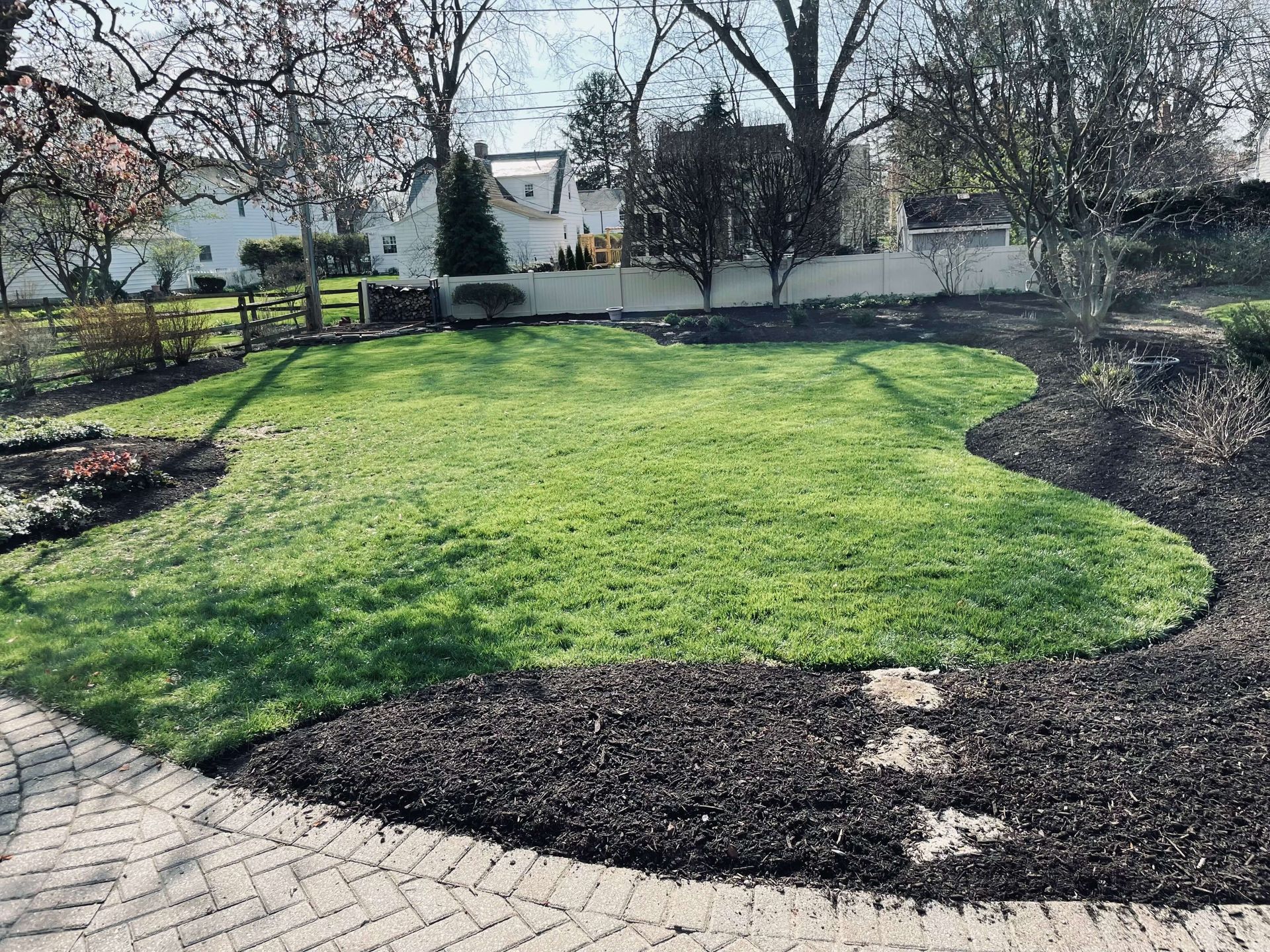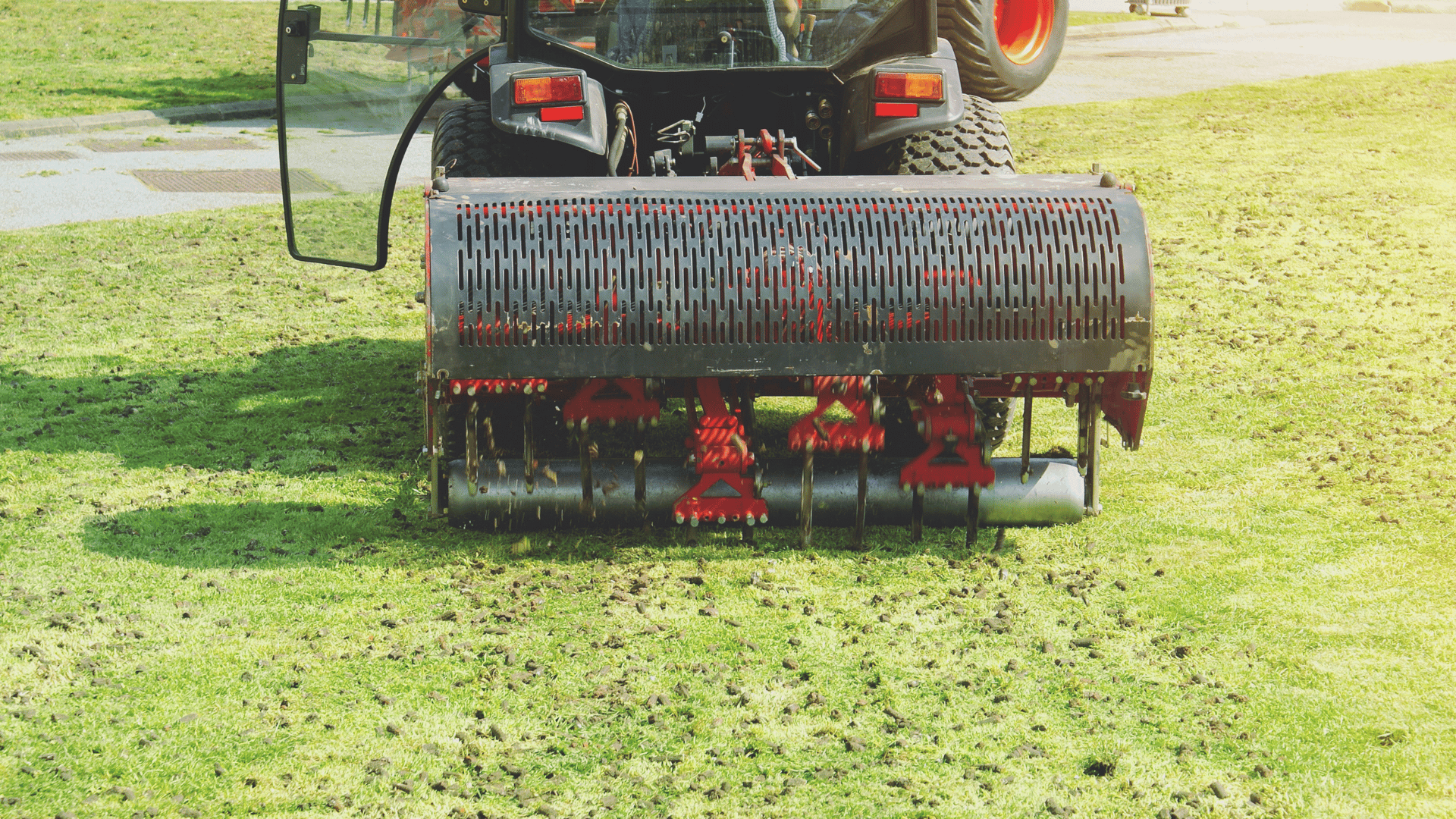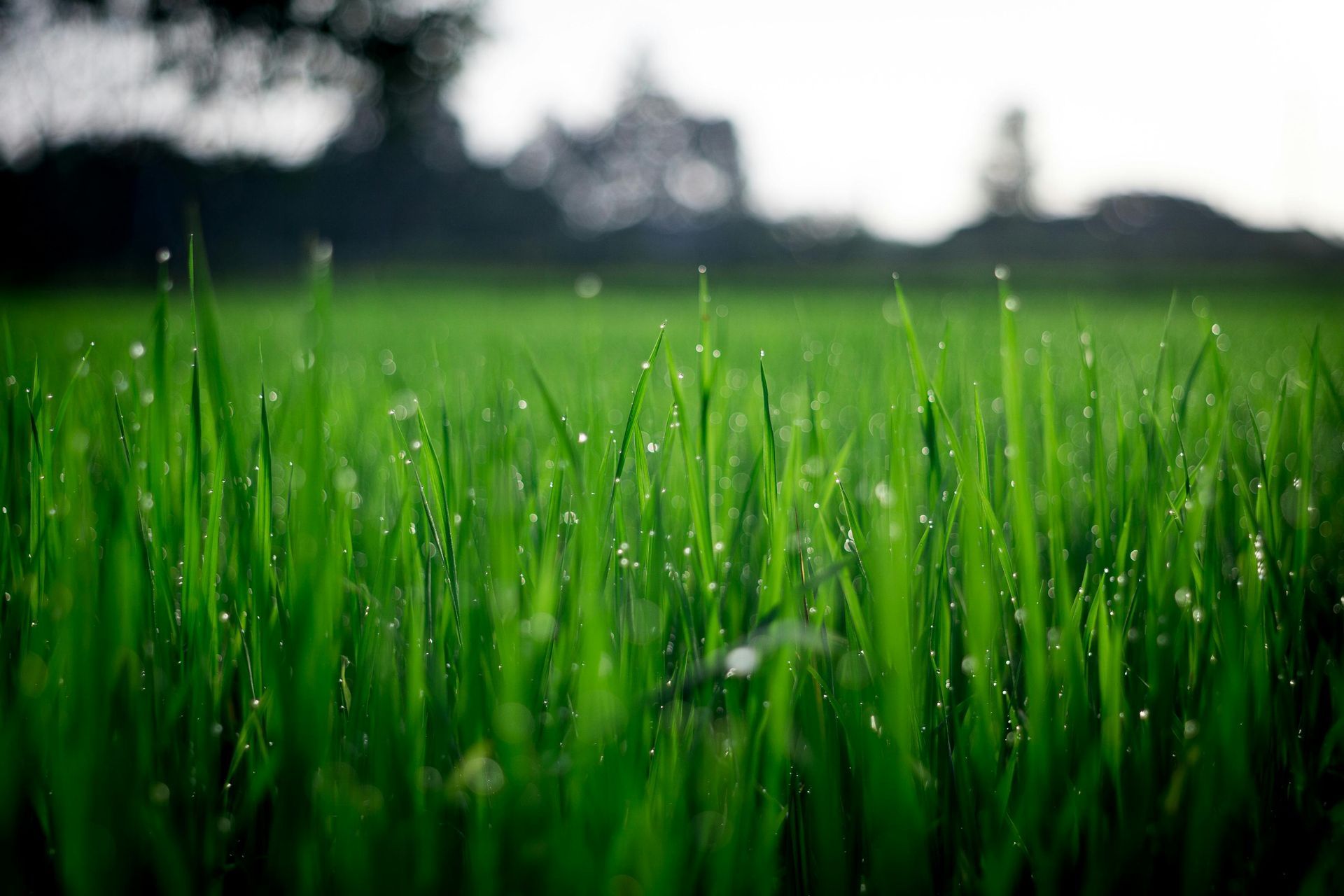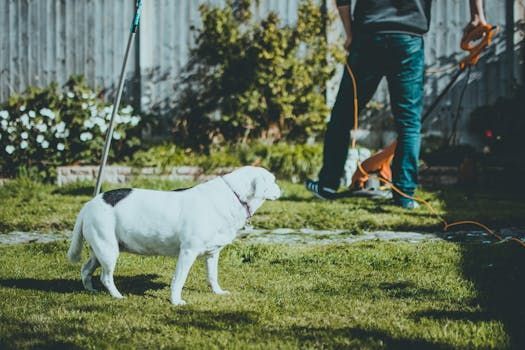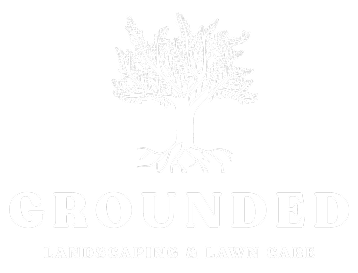Fall Prep Essentials: Preparing Your Columbus Property for Autumn
September in Columbus isn't just about cooler mornings and football season—it's the most crucial month for your lawn's long-term health and success. While many homeowners start thinking about putting their lawn care routines to bed, smart property owners know that fall is actually when the magic happens beneath the surface. This is when your grass shifts its energy from blade growth to root development, creating the foundation for a spectacular spring lawn.
Columbus weather patterns make September particularly critical for lawn preparation. Our fall season typically brings cooler temperatures in the 60s and 70s, paired with more consistent rainfall—ideal conditions for grass recovery and establishment. After enduring Ohio's hot, humid summers and the stress that comes with clay soil and unpredictable weather, your lawn is ready for some serious TLC. The timing couldn't be better, as we're looking at cooler and drier conditions than usual this fall, making it perfect for core aeration and overseeding projects.
What you do in the next few weeks will determine whether you'll have neighbors admiring your lush, thick lawn come spring, or if you'll be dealing with another year of thin, patchy grass that struggles against weeds and drought stress. Let's dive into the essential fall preparation strategies that will transform your Columbus property.
1. Core Aeration: The Fall Advantage
If you're only going to invest in one lawn service this year, make it fall core aeration. Here in Columbus, our notorious clay soil creates a perfect storm for compaction issues that regular fertilizing simply can't fix. Every time someone walks across your lawn, every mowing session, every season of weather cycles—it all adds up to soil that's packed tighter than a downtown parking lot during a Buckeyes game.
Core aeration is fundamentally different from the spike aeration some companies offer. True core aeration uses hollow tines that actually remove small plugs of soil from your lawn, creating thousands of channels for air, water, and nutrients to reach deep into the root zone. Those little soil cores you see scattered across your lawn after service? Don't rake them up—they're gold. As they break down over the following weeks, they return valuable organic matter and nutrients back to your soil surface.
Fall aeration trumps spring aeration for several critical reasons. First, your grass is naturally focusing on root development during cooler months rather than fighting to survive summer heat stress. This means the energy goes where you want it—deep into building a robust root system that can withstand next year's challenges. Second, fall aeration sets up perfect conditions for overseeding, creating ideal seed-to-soil contact without the weed competition you'd face in spring.
The timing for Columbus lawns is typically mid-September through early October, when soil temperatures are still warm enough to encourage root growth but air temperatures have cooled sufficiently to reduce plant stress. Clay soil, which dominates our area, requires deeper penetration—at least 2-3 inches—to effectively break up that compacted layer that's been building up over years of use.
Professional equipment makes all the difference here. The core aerators we use can pull plugs from depths that rental equipment simply can't match, and they're calibrated specifically for Ohio clay soil conditions. Plus, professional aeration includes proper preparation like flagging sprinkler heads and invisible fencing, ensuring thorough coverage without damage to your property's infrastructure.
2. Overseeding Strategies for Thicker Lawns
Overseeding after aeration isn't just about filling bare spots—it's about introducing superior grass varieties that can outcompete weeds and withstand Ohio's challenging climate conditions. The grass seed technology available today is lightyears ahead of what was planted in most established lawns, offering better drought tolerance, disease resistance, and overall resilience.
For Columbus lawns, the gold standard grass varieties include tall fescue blends, fine fescue for shadier areas, and premium Kentucky bluegrass for full-sun zones. Tall fescue, in particular, excels in our clay soil conditions because of its deep root system and exceptional drought tolerance. These newer cultivars are specifically bred to handle our hot, humid summers while maintaining their rich color and density.
The key to successful overseeding lies in timing and technique. You want to complete overseeding 2-4 weeks before the average first frost date, which falls between October 11th and 20th in the Columbus area. This gives new grass enough time to establish before winter dormancy sets in. The aeration holes create perfect pockets for seeds to settle into, ensuring better seed-to-soil contact than broadcasting over compacted ground.
Soil preparation goes beyond just aeration. The pH of Columbus clay soil often runs alkaline, which can inhibit nutrient uptake even with the best seed varieties. A professional soil analysis can determine if lime or sulfur applications are needed to optimize growing conditions. Additionally, a starter fertilizer with higher phosphorus content supports root development in new seedlings.
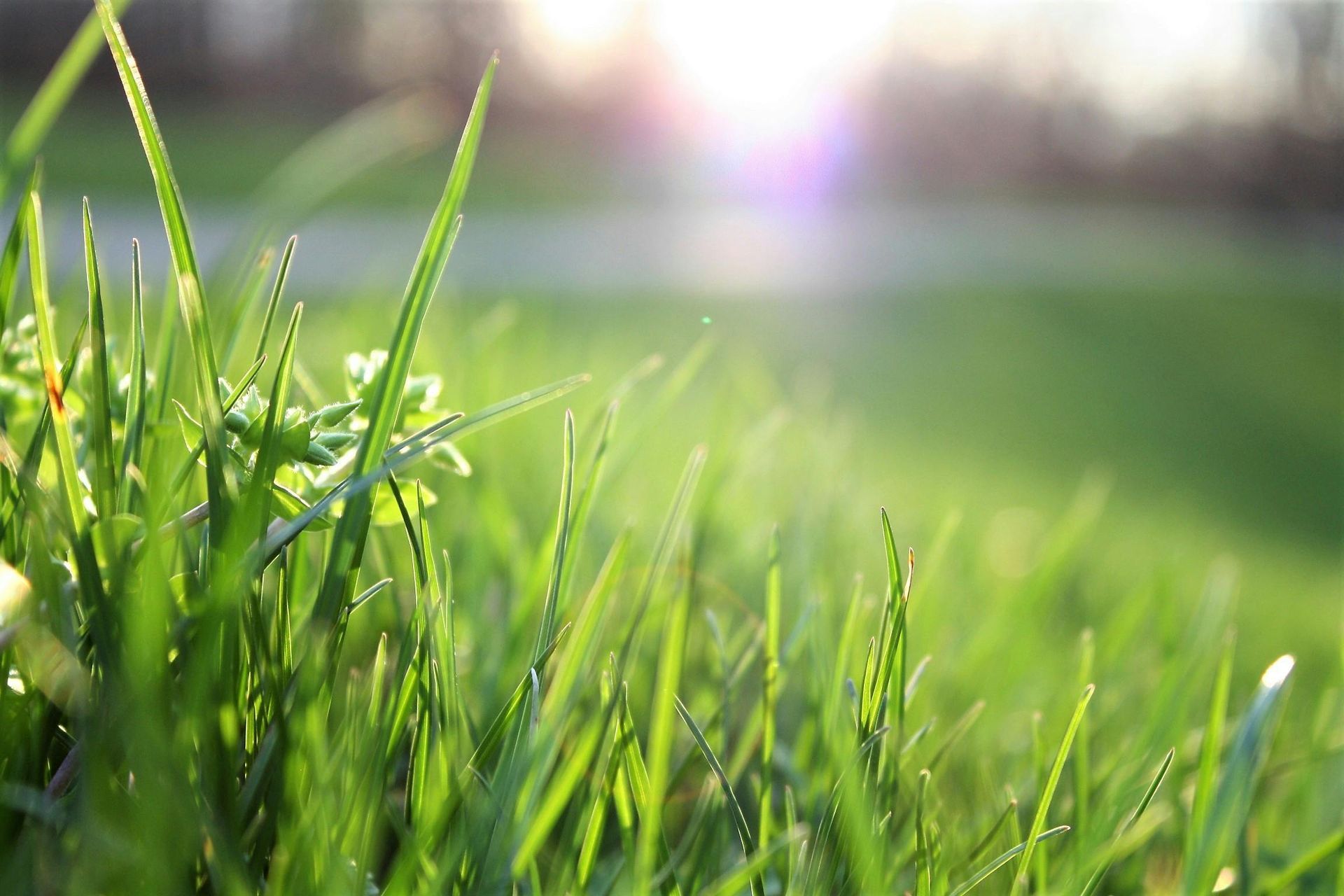
Watering strategy for new seed is critical and often misunderstood. You need frequent, light watering—typically 10-15 minutes twice daily—to keep the seed bed moist without creating runoff or washing seeds away. This differs significantly from established lawn watering, where deep, infrequent watering is preferred. Once germination occurs (usually 7-14 days for quality seed), you can gradually transition to less frequent but deeper watering sessions.
Realistic expectations matter here. You'll see new grass emerging within two weeks, but it takes a full growing season for overseeded areas to fully integrate with existing turf. Patience during establishment pays dividends—resist the urge to walk on newly seeded areas and avoid aggressive raking that could disturb developing root systems.
3. Fall Fertilization Programs
Fall fertilization is fundamentally different from spring and summer feeding, and understanding this difference is crucial for Columbus lawns. While spring fertilization focuses on promoting green-up and blade growth, fall fertilization is all about building root reserves and preparing grass plants for winter stress and spring recovery.
The ideal fall fertilizer program involves two applications: an early fall treatment in September that supports recovery from summer stress, and a late fall "winterizer" application in October or early November. The September application should focus on balanced nutrition with moderate nitrogen levels to support both root development and some continued blade growth. The later application should be higher in potassium and lower in nitrogen, promoting root storage and cold tolerance.
Slow-release fertilizers are particularly valuable in fall programs because they provide steady nutrition as soil temperatures gradually cool. Quick-release fertilizers can actually work against your goals by pushing late-season blade growth that makes grass more susceptible to winter damage. Professional-grade fertilizers often include micronutrients like iron and sulfur that are particularly beneficial for Ohio clay soils.
Timing fertilizer applications with weather patterns maximizes effectiveness while minimizing environmental impact. Applying fertilizer before expected rain helps with nutrient incorporation, but avoid applications right before heavy downpours that can lead to runoff. The moderate temperatures and increased rainfall typical of Columbus falls create ideal conditions for nutrient uptake and root development.
4. Preparing for Leaf Season
Columbus's abundant tree canopy is one of our city's greatest assets, but it creates some serious challenges for lawn health during fall. Those beautiful maples, oaks, and sycamores that provide summer shade will soon be dropping their leaves, and how you handle this annual deluge can make or break your lawn's health through winter and into spring.
Planning for efficient leaf removal starts with understanding your specific property's challenges. Areas under large oak trees will see heavy leaf drop over an extended period, while maple trees tend to drop most of their leaves within a concentrated timeframe. Identifying these patterns helps you schedule removal efforts more effectively and avoid overwhelming buildup that can smother grass.
Equipment preparation now saves headaches later. Ensure your leaf blower is serviced and running efficiently, sharpen mower blades if you plan to mulch leaves, and check that gutters and drainage areas are clear to handle increased organic debris. Many homeowners underestimate the volume of leaves they'll be dealing with—a single large oak can drop several thousand pounds of leaves over the course of fall.

The key principle for leaf management is never letting them accumulate to the point where they block sunlight from reaching grass blades. A light layer of leaves can actually benefit your lawn by providing organic matter as they decompose, but thick layers create anaerobic conditions that promote fungal diseases and can kill grass outright. Plan for weekly removal during peak drop periods, typically mid to late October in our area.
Professional leaf management services become cost-effective when you consider the time investment and potential lawn damage from delayed cleanup. Professional crews have industrial equipment that can handle large properties efficiently and can coordinate removal with municipal pickup schedules. They also understand which areas of your lawn are most vulnerable to leaf damage and prioritize accordingly.
5. Irrigation System Winterization Planning
October in Columbus means it's time to start thinking about protecting your irrigation investment from freeze damage. Ohio's freeze-thaw cycles can wreak havoc on irrigation systems that haven't been properly winterized, leading to expensive spring repairs and delayed lawn care programs.
The critical timing for irrigation shutdown typically falls in late October to early November, depending on weather forecasts. You want to complete winterization before the first hard freeze, which historically occurs around October 25th in the Columbus area. However, climate variability means you need to watch forecasts carefully rather than relying solely on calendar dates.
Professional winterization involves more than just shutting off water supplies. Compressed air blowouts ensure all water is removed from underground lines, preventing expansion damage during freeze cycles. Backflow preventers need special attention, as they're often located above ground and particularly vulnerable to freeze damage. Control systems should be switched to rain mode to prevent automatic activation during winter months.
The transition to manual watering requires some adjustment in your fall care routine. New grass from overseeding projects will still need consistent moisture through October, so plan for supplemental watering using sprinklers or soaker hoses that can be easily disconnected before freezing weather. This transitional period is crucial for establishing new grass before dormancy sets in.
6. Early Winter Prep Tasks
Smart fall preparation extends beyond lawn care to include landscape elements that impact your property's appearance and health through winter. Columbus winters can be unpredictable, swinging between mild periods and sudden cold snaps, making comprehensive preparation essential.
Plant protection strategies should focus on newly planted trees and shrubs, which are most vulnerable to winter damage. Burlap wrapping for evergreens exposed to harsh winds, mulch adjustments around tree bases, and proper pruning timing all contribute to successful winter survival. Avoid late fall pruning that encourages new growth vulnerable to freeze damage.
Mulch management requires a delicate balance. While mulch provides insulation and weed suppression, too much mulch against plant bases can harbor pests and create moisture problems. The ideal depth is 2-3 inches around trees and shrubs, pulled back several inches from trunk bases. Fresh mulch applications should be completed before heavy leaf fall to maintain clean, professional appearance.
Tool maintenance and storage preparation saves time and money when spring arrives. Clean and oil all equipment, change spark plugs and filters, and store tools in dry conditions. Drain fuel from equipment that won't be used through winter, or add fuel stabilizer to prevent carburetor problems. Sharp, well-maintained tools make spring cleanup tasks much more efficient.
Planning winter services now ensures your property stays presentable through the dormant season. Snow removal contracts, ice management strategies, and emergency tree service contacts should all be arranged before you need them. Columbus weather can turn quickly, and being prepared prevents scrambling during winter storms.
7. Professional Fall Services Integration
The real value in professional fall services comes from comprehensive programs that address all your property's needs in coordinated fashion. Individual services like aeration or leaf removal provide benefits, but integrated programs deliver exponentially better results through proper timing and technique coordination.
Comprehensive fall care packages typically combine core aeration, overseeding, fertilization, and seasonal cleanup into streamlined service schedules. This approach ensures optimal timing between services—for example, fertilizing immediately after aeration maximizes nutrient penetration, while overseeding within 24-48 hours of aeration ensures best seed-to-soil contact.
Professional expertise becomes particularly valuable in diagnosing and addressing specific property challenges. Experienced technicians can identify drainage issues, soil pH problems, pest pressures, and disease concerns that homeowners might miss. They can also adjust service timing based on current weather patterns and seasonal variations.
Scheduling efficiency provides both cost savings and better results. Professional crews can complete comprehensive fall services in a fraction of the time it would take homeowners, using commercial-grade equipment calibrated for optimal results. They can also coordinate services to minimize property disruption and ensure proper service sequencing.
The coordination with winter services creates year-round property management that maintains appearance and health through all seasons. Companies that provide both fall preparation and winter maintenance understand how seasonal services complement each other and can plan accordingly.
Creating Your Columbus Fall Action Plan
Success with fall lawn preparation comes down to timing, technique, and consistency. Start by assessing your property's specific needs—areas with heavy traffic, drainage issues, thin grass, or shade challenges all require tailored approaches. The window for optimal results in Columbus is relatively narrow, typically running from mid-September through mid-October for most services.
Your fall preparation checklist should prioritize core aeration and overseeding as the foundation services, followed by appropriate fertilization and seasonal cleanup. If budget requires prioritizing, focus on aeration first—it provides the biggest bang for your investment dollar and creates conditions that make other services more effective.
Professional consultation can help you develop a multi-year plan that addresses your property's specific challenges while staying within budget constraints. Not every lawn needs every service every year, but understanding what your property needs and when creates a roadmap for continuous improvement.
The investment you make in fall preparation pays dividends throughout the following year. A properly prepared lawn requires less water, fewer pest treatments, and less intensive maintenance while providing better appearance and property value enhancement. Columbus homeowners who commit to comprehensive fall preparation consistently enjoy the best lawns in their neighborhoods.
Ready to give your Columbus lawn the fall preparation it deserves? Contact Grounded Landscaping & Lawn Care at (614) 674-1839 for professional aeration, overseeding, and comprehensive fall services. Our experienced team understands Columbus soil conditions and weather patterns, ensuring your property gets the right treatments at the right time. Don't wait until spring to wish you'd prepared better—let's create the foundation for your best lawn year yet.
